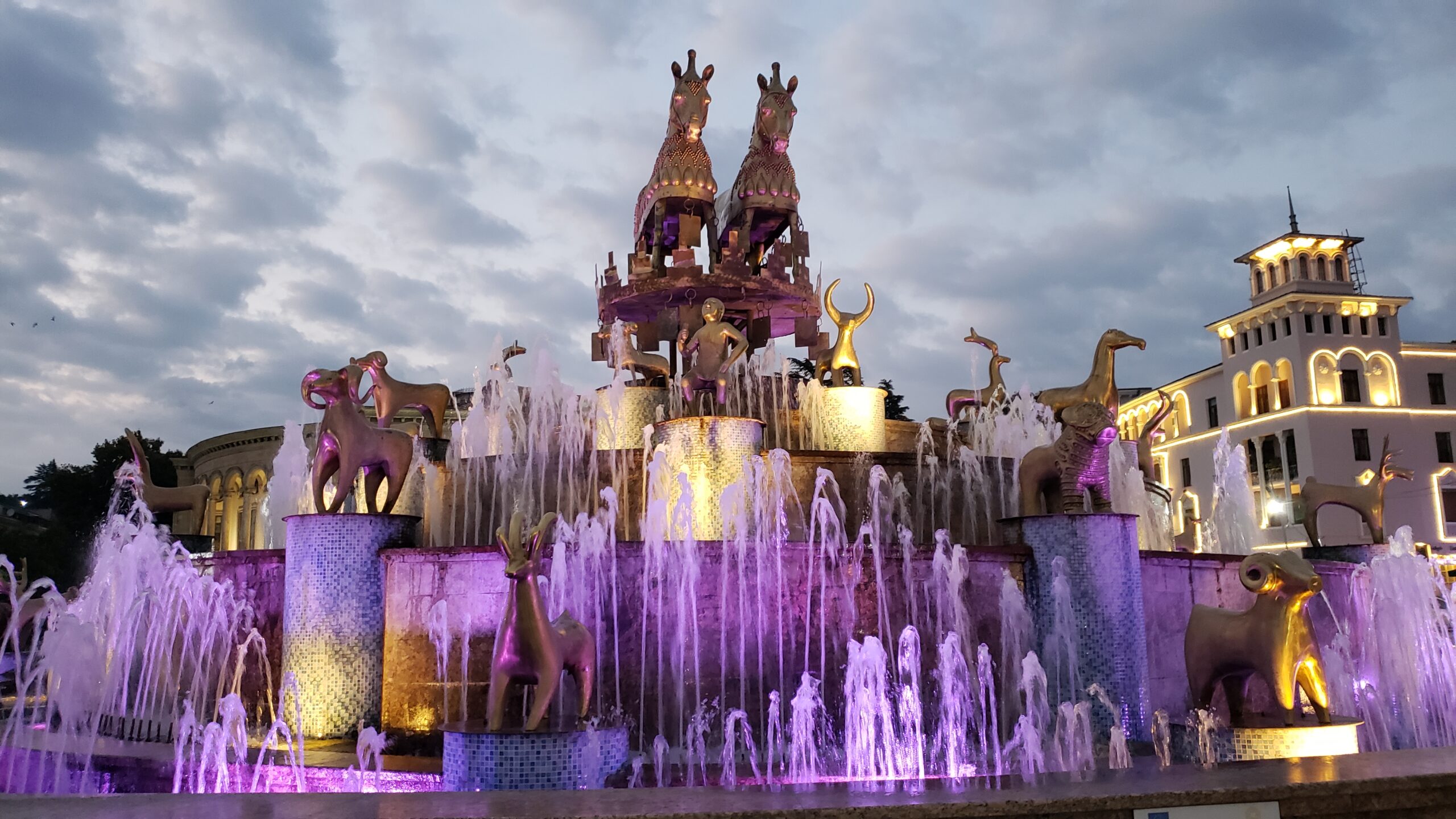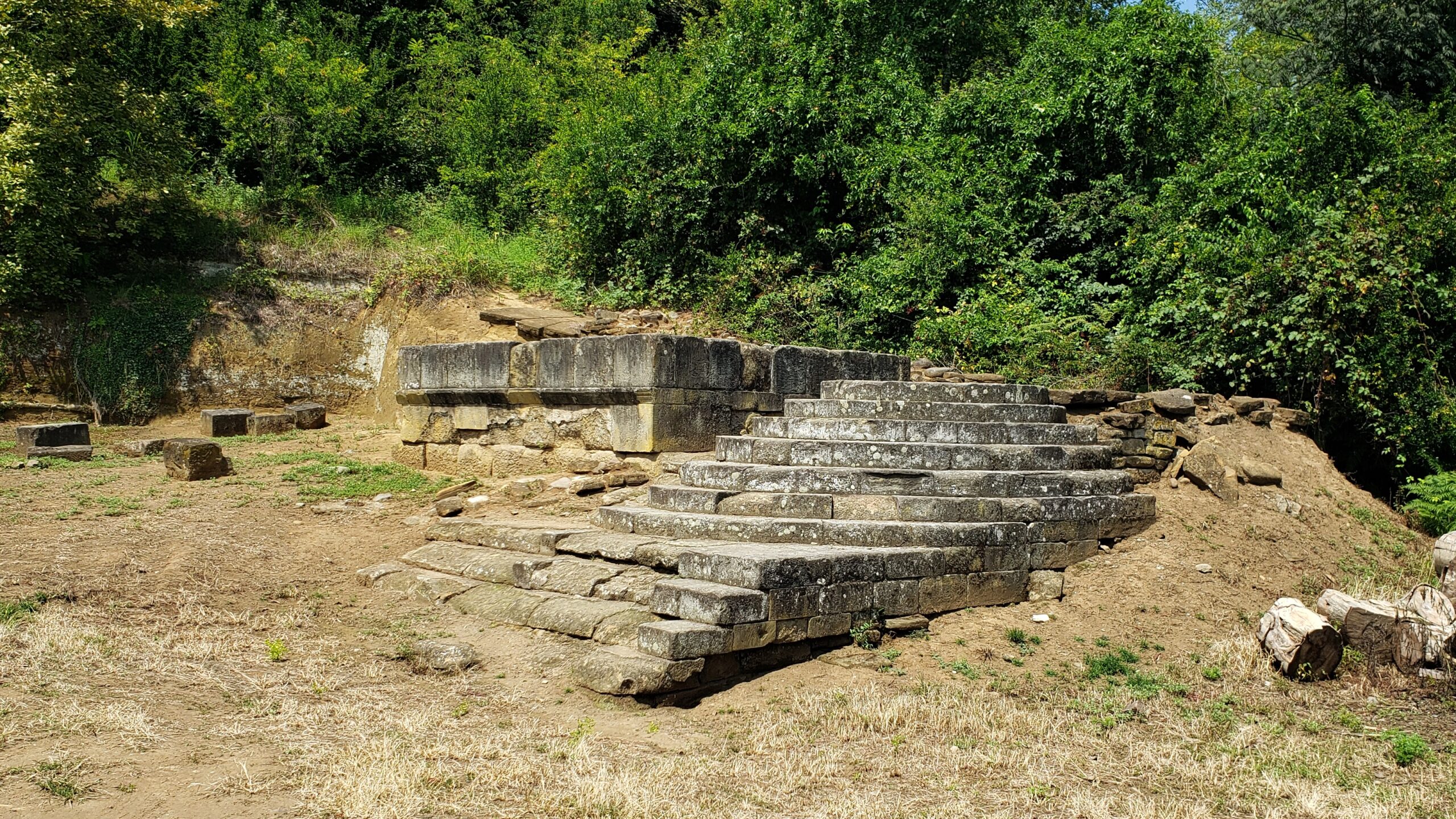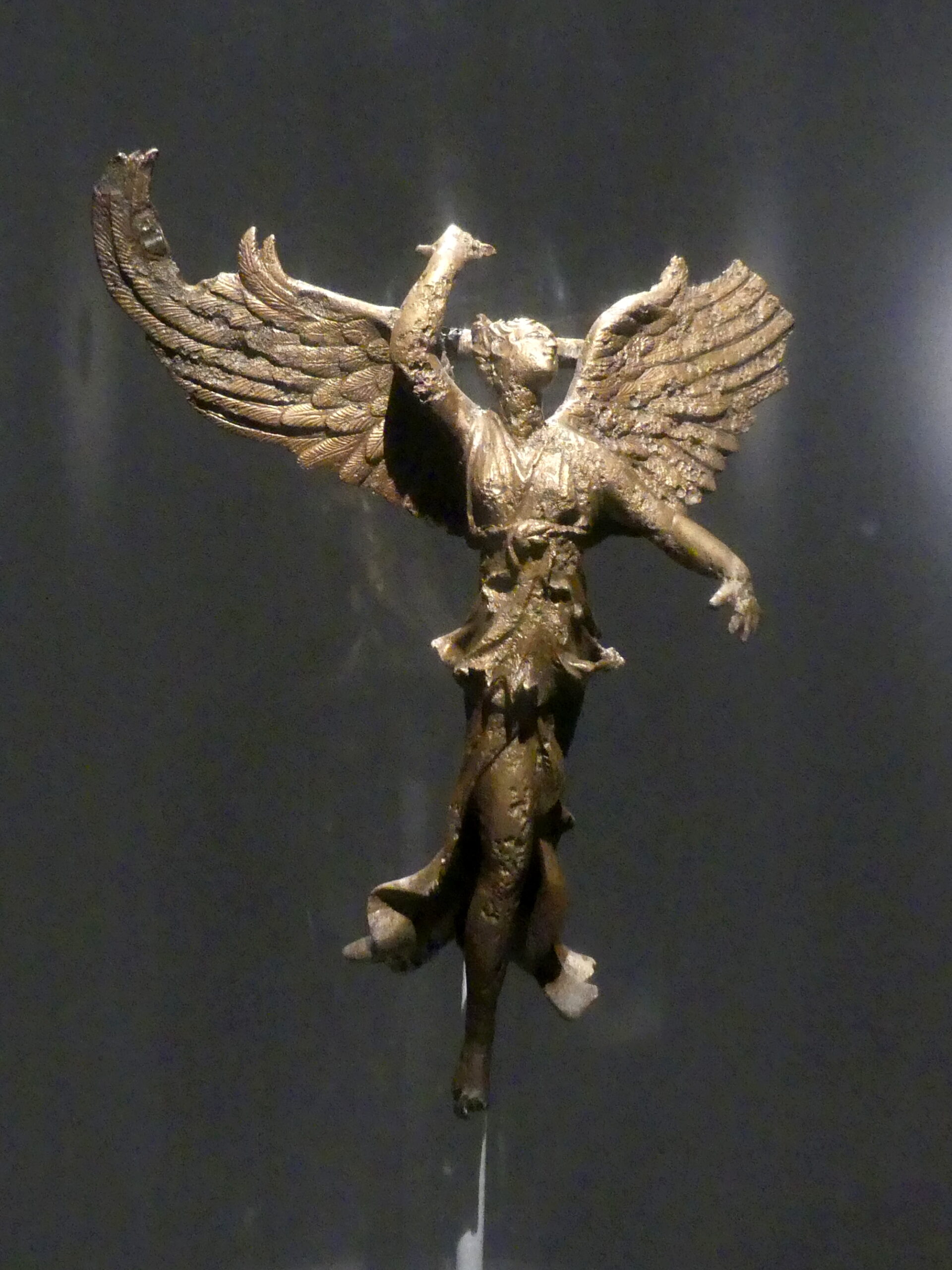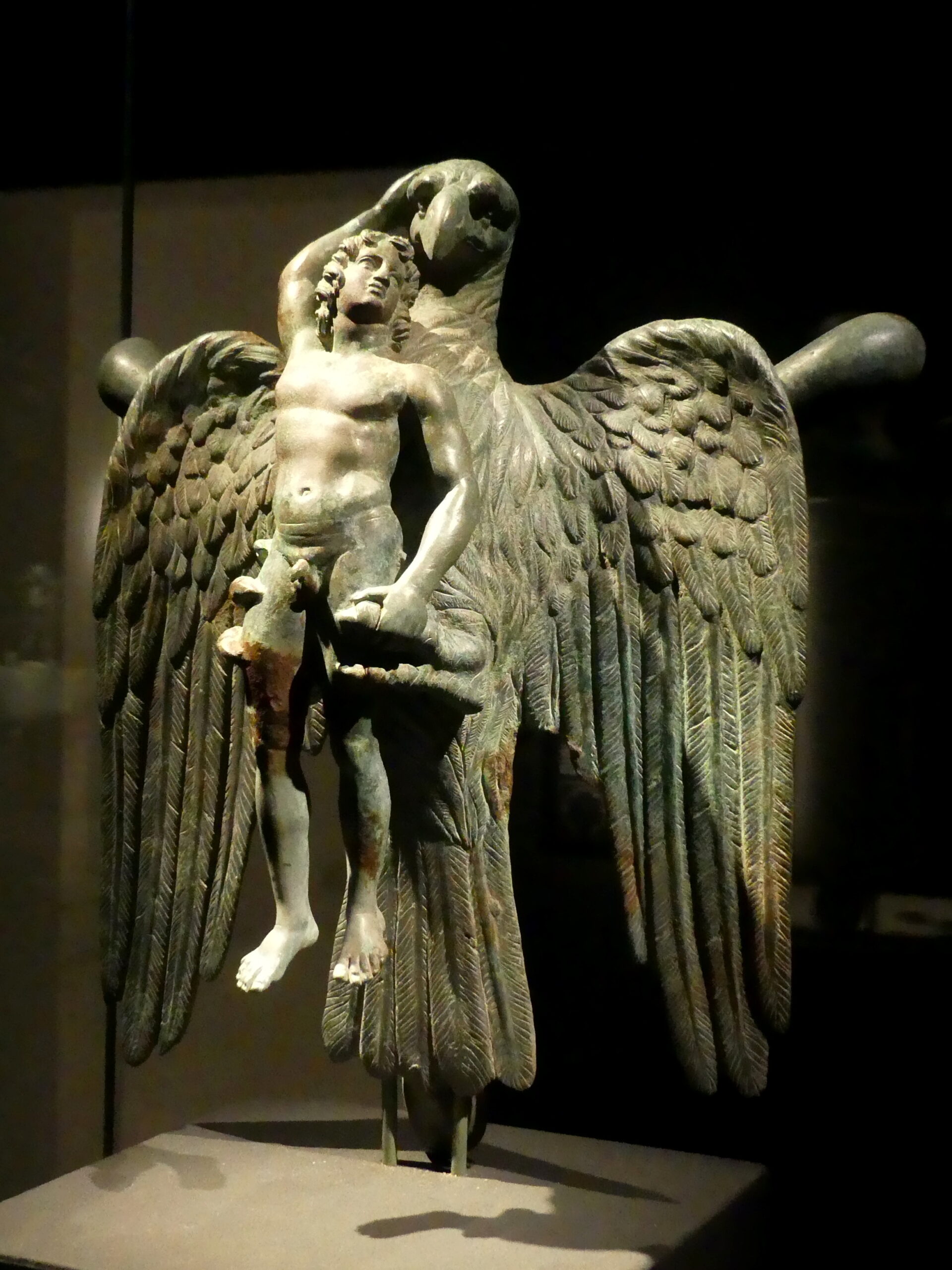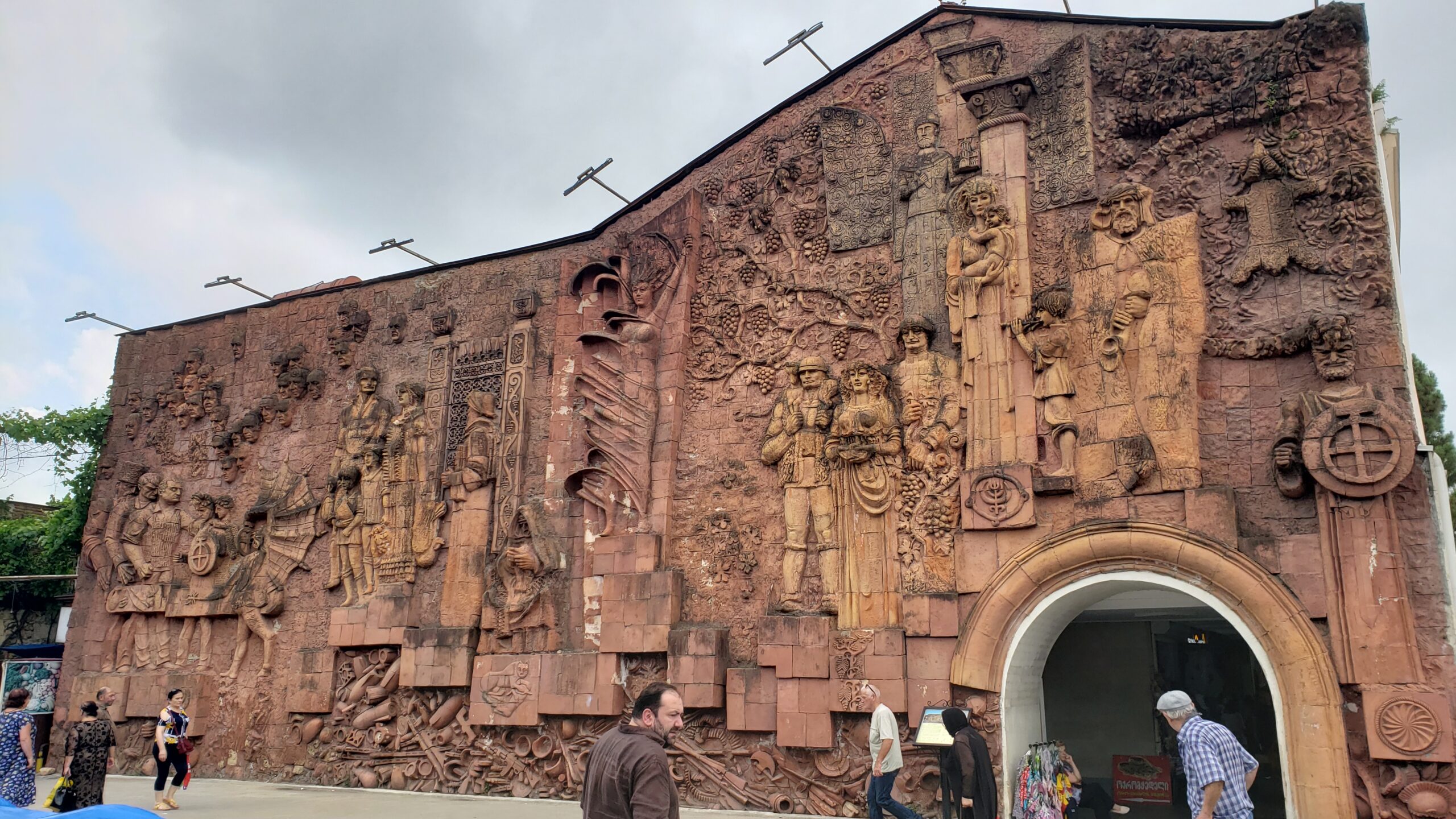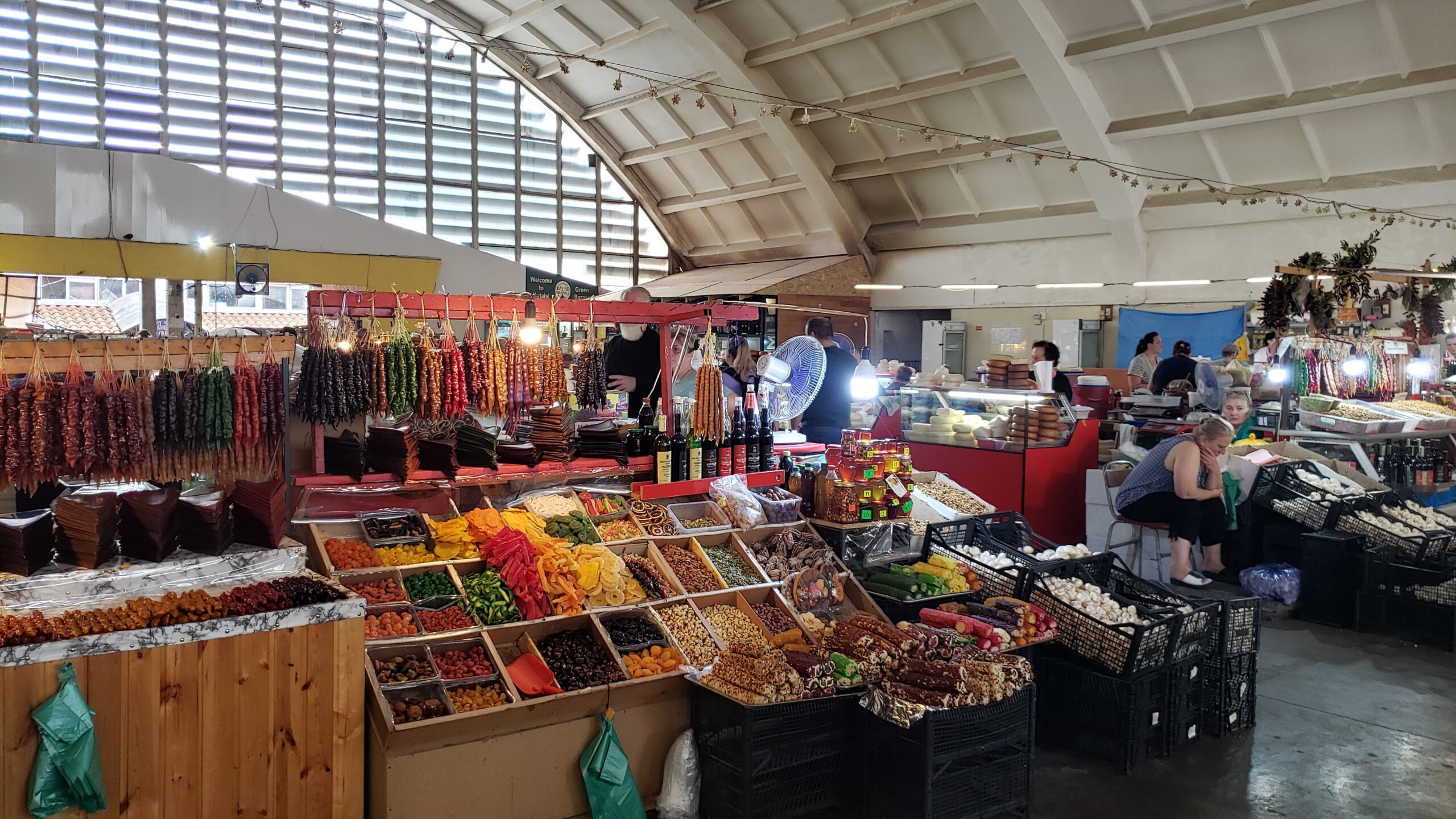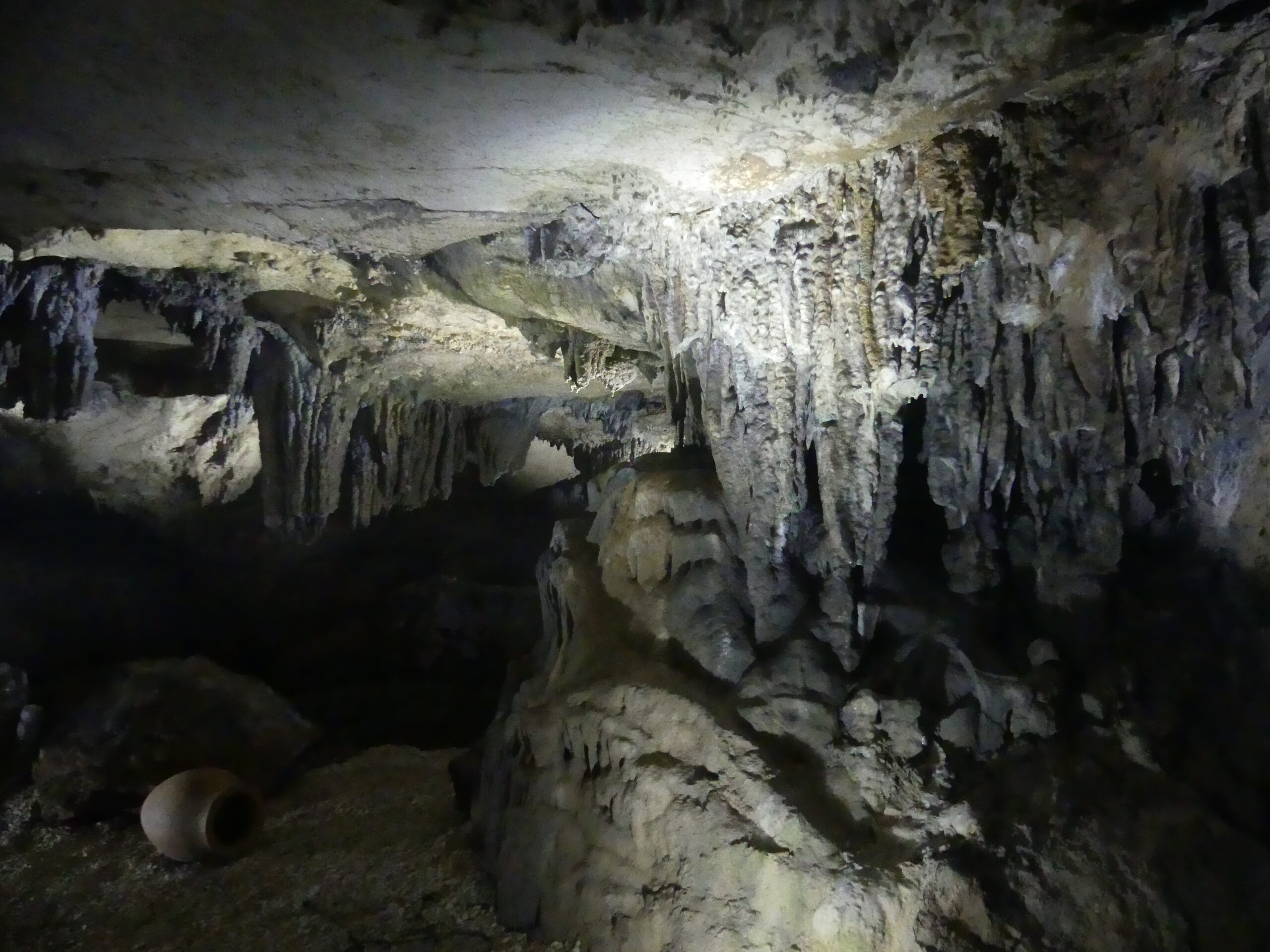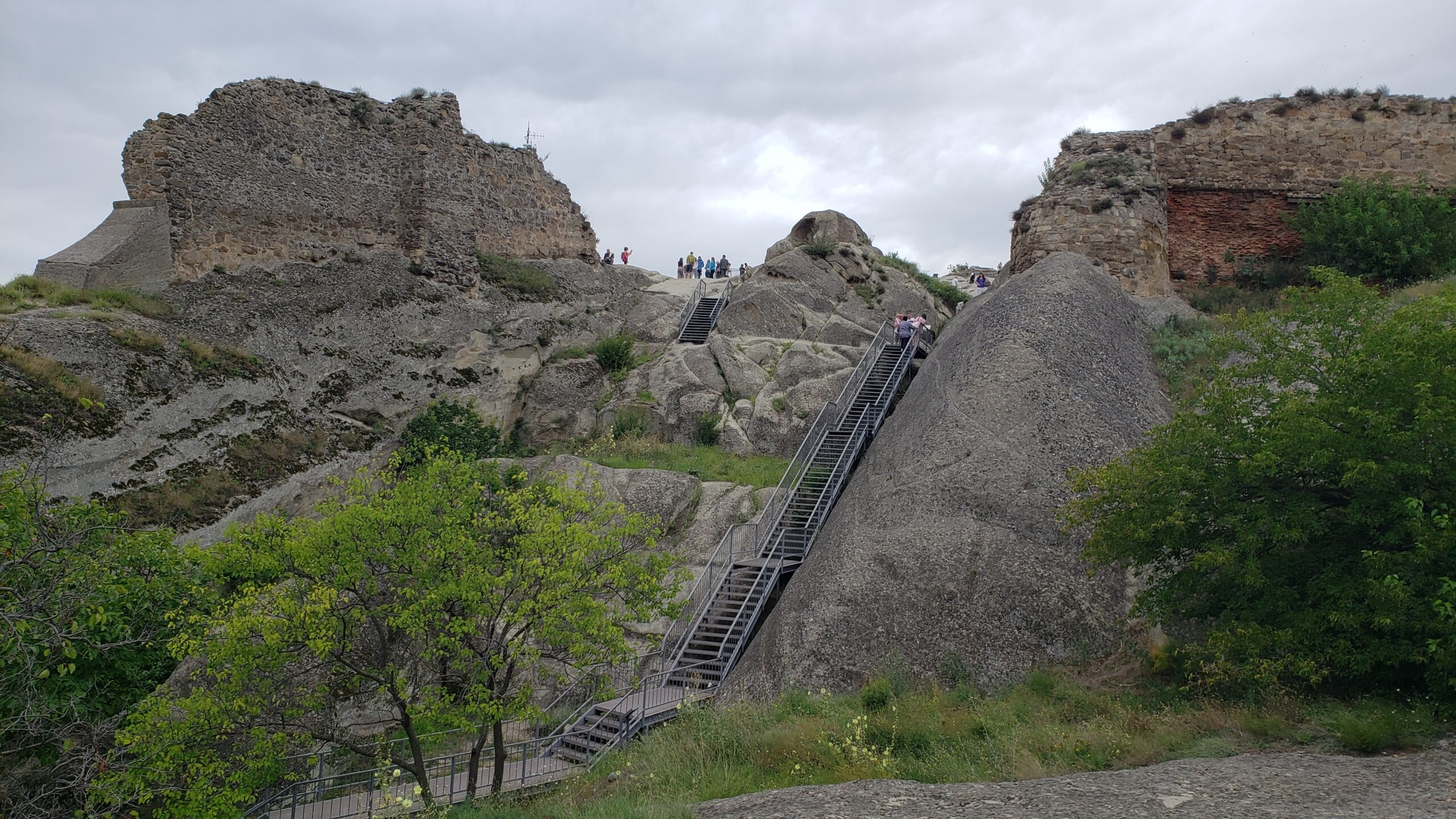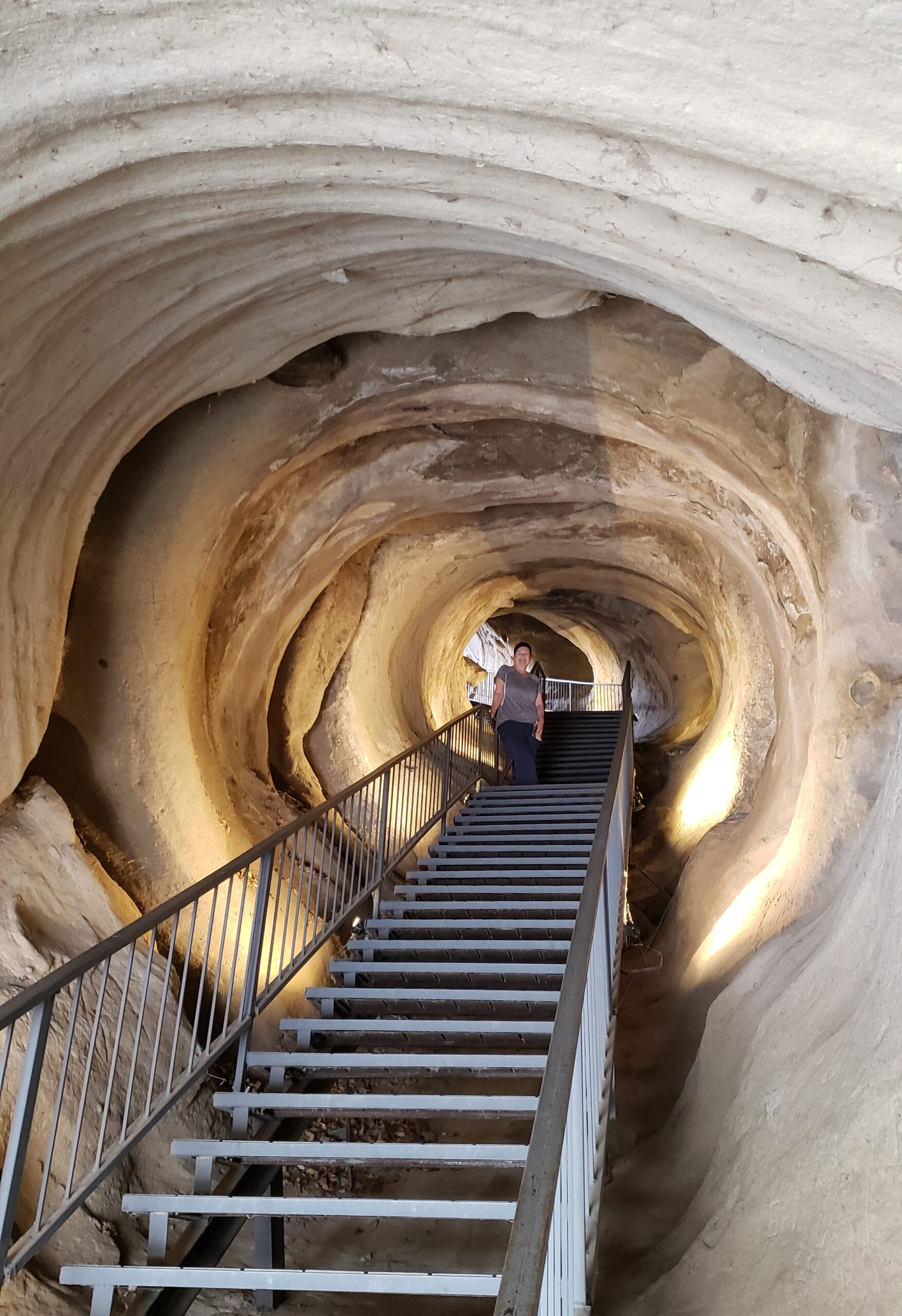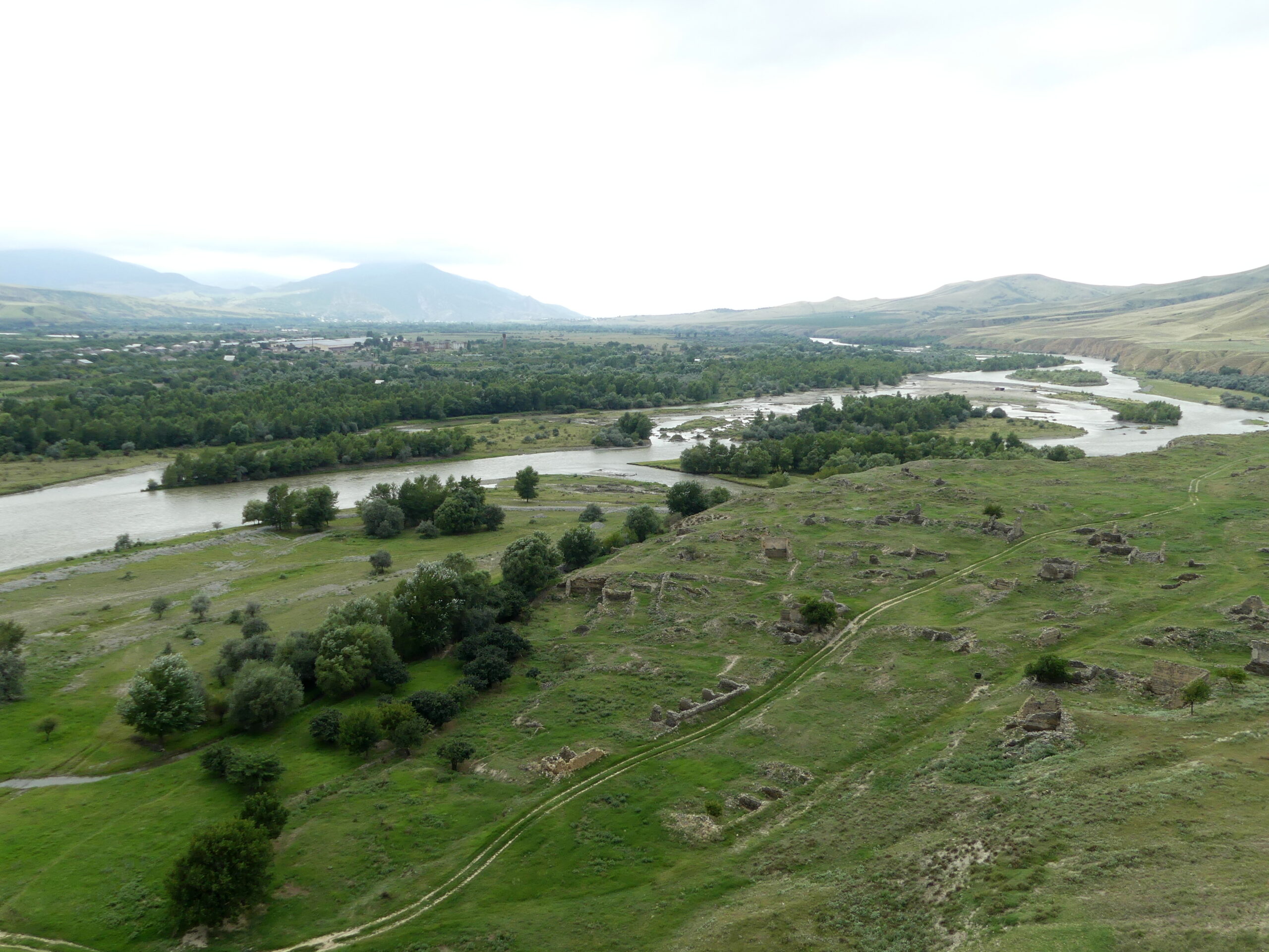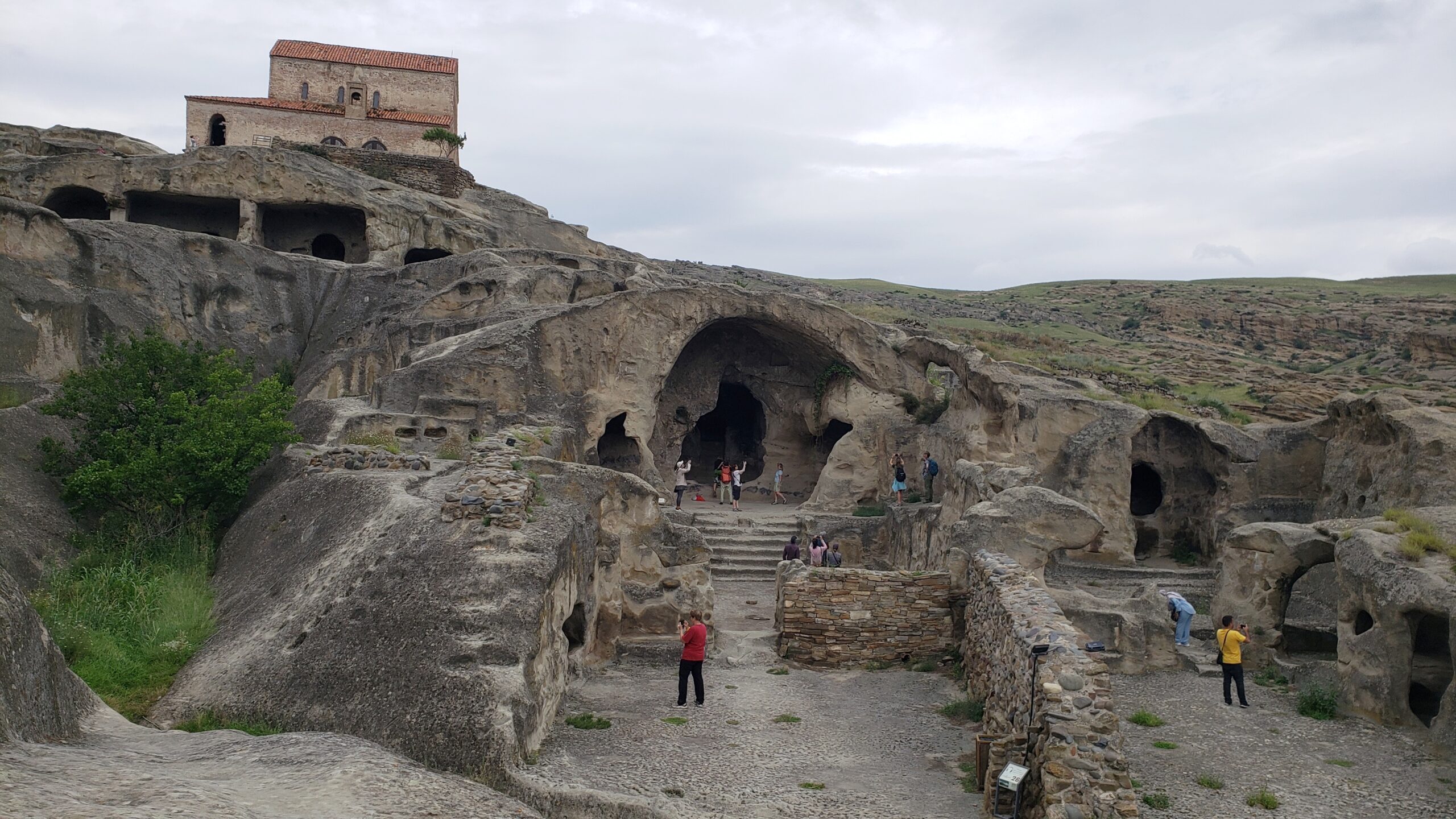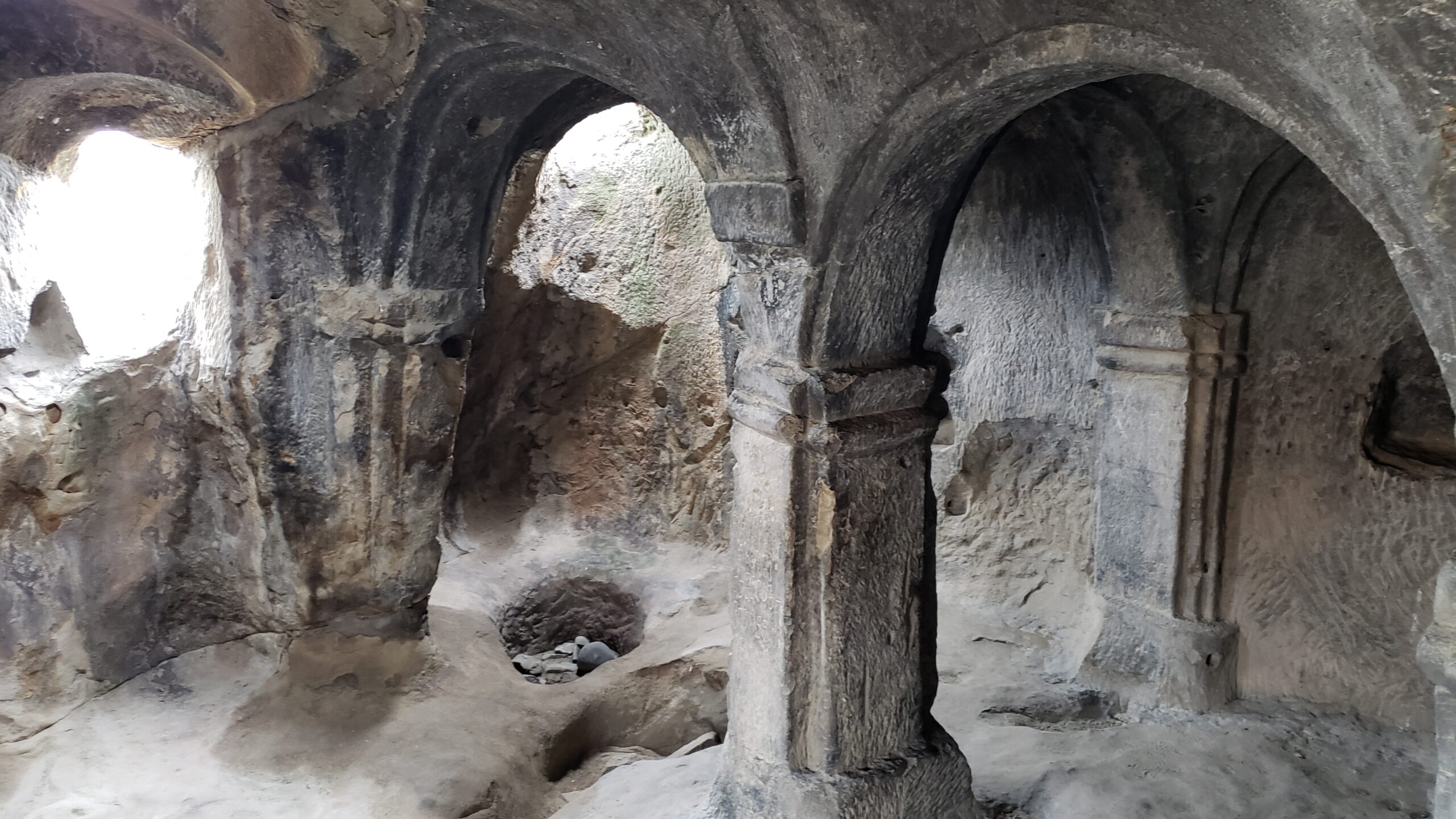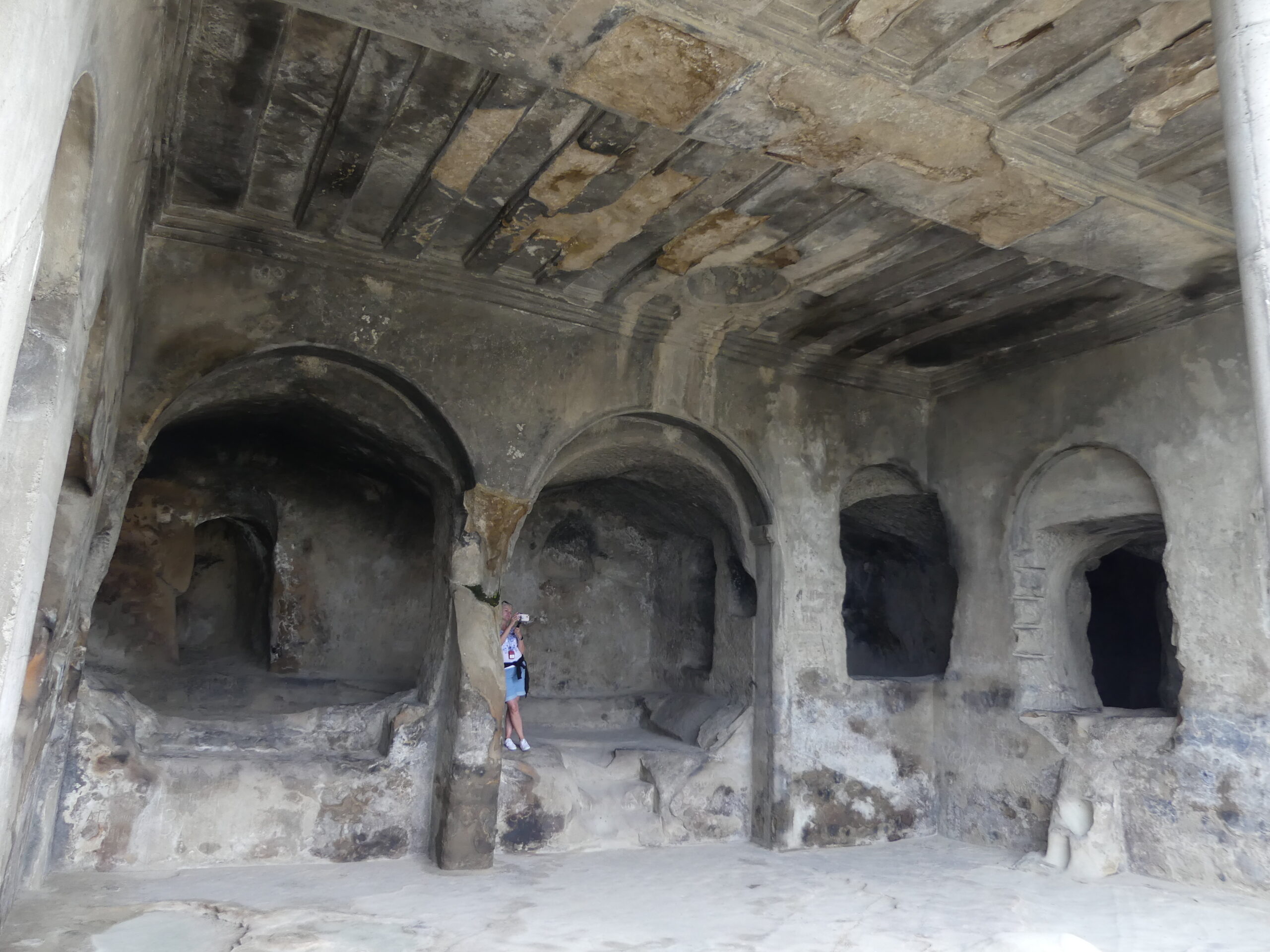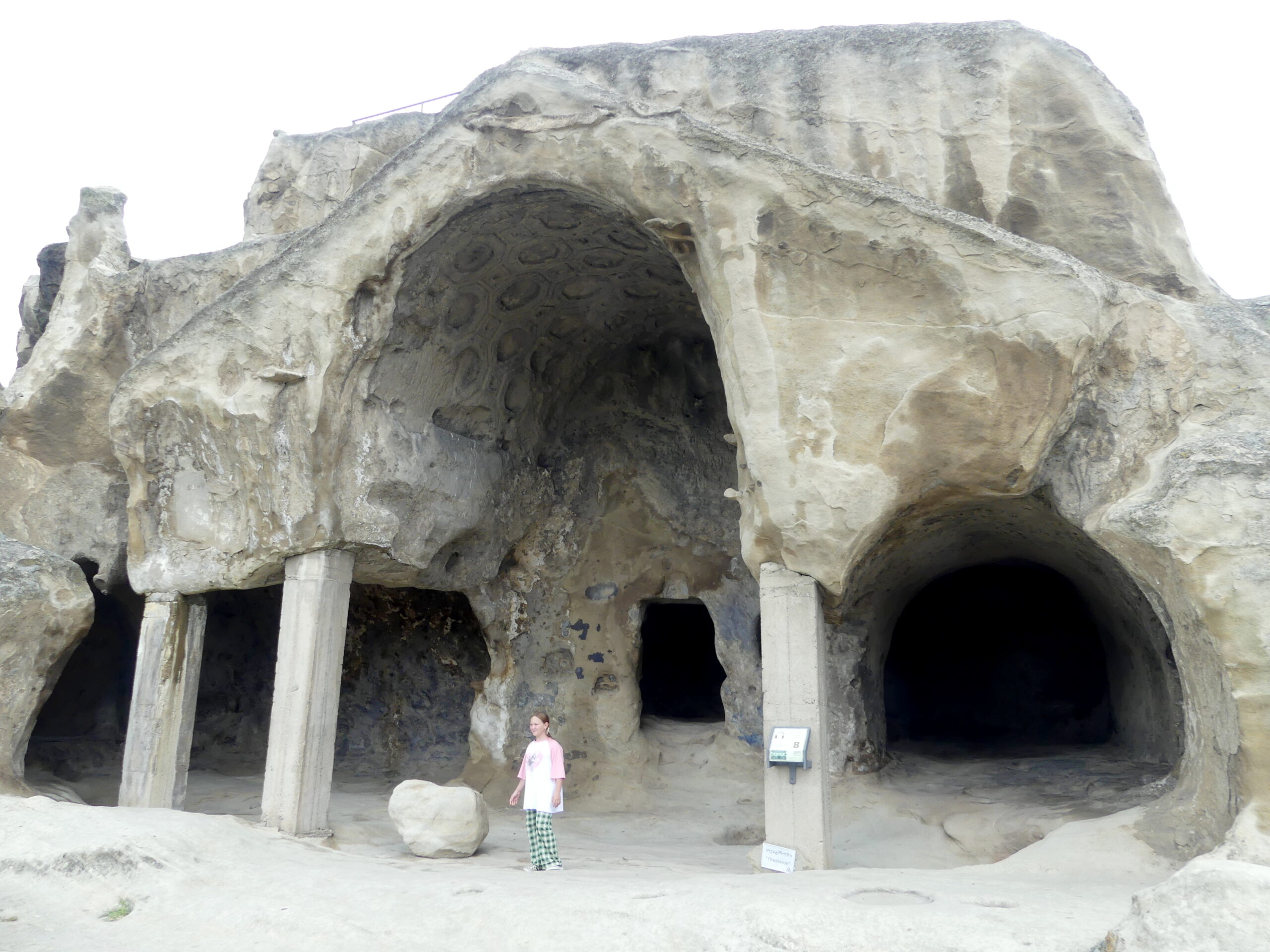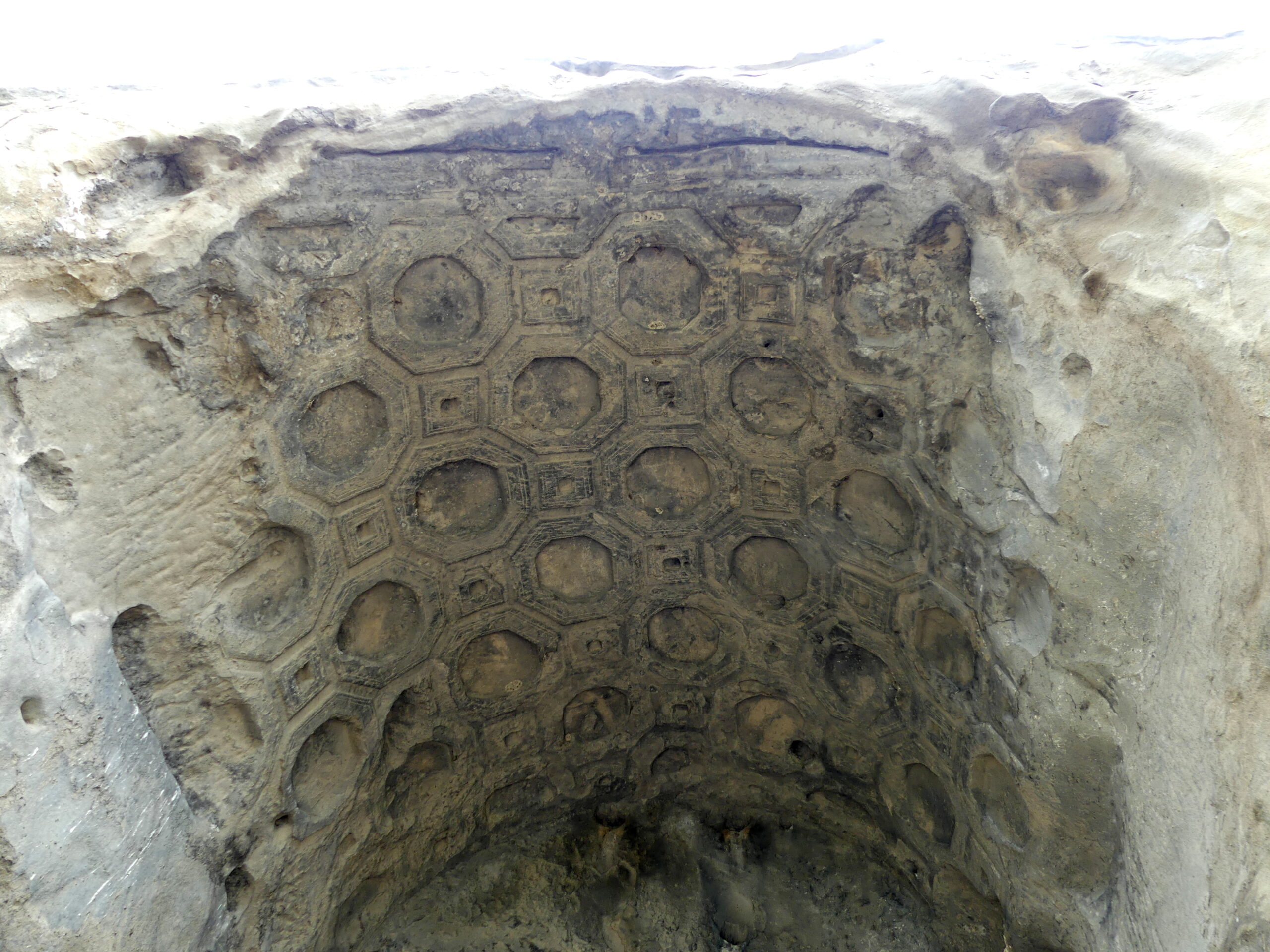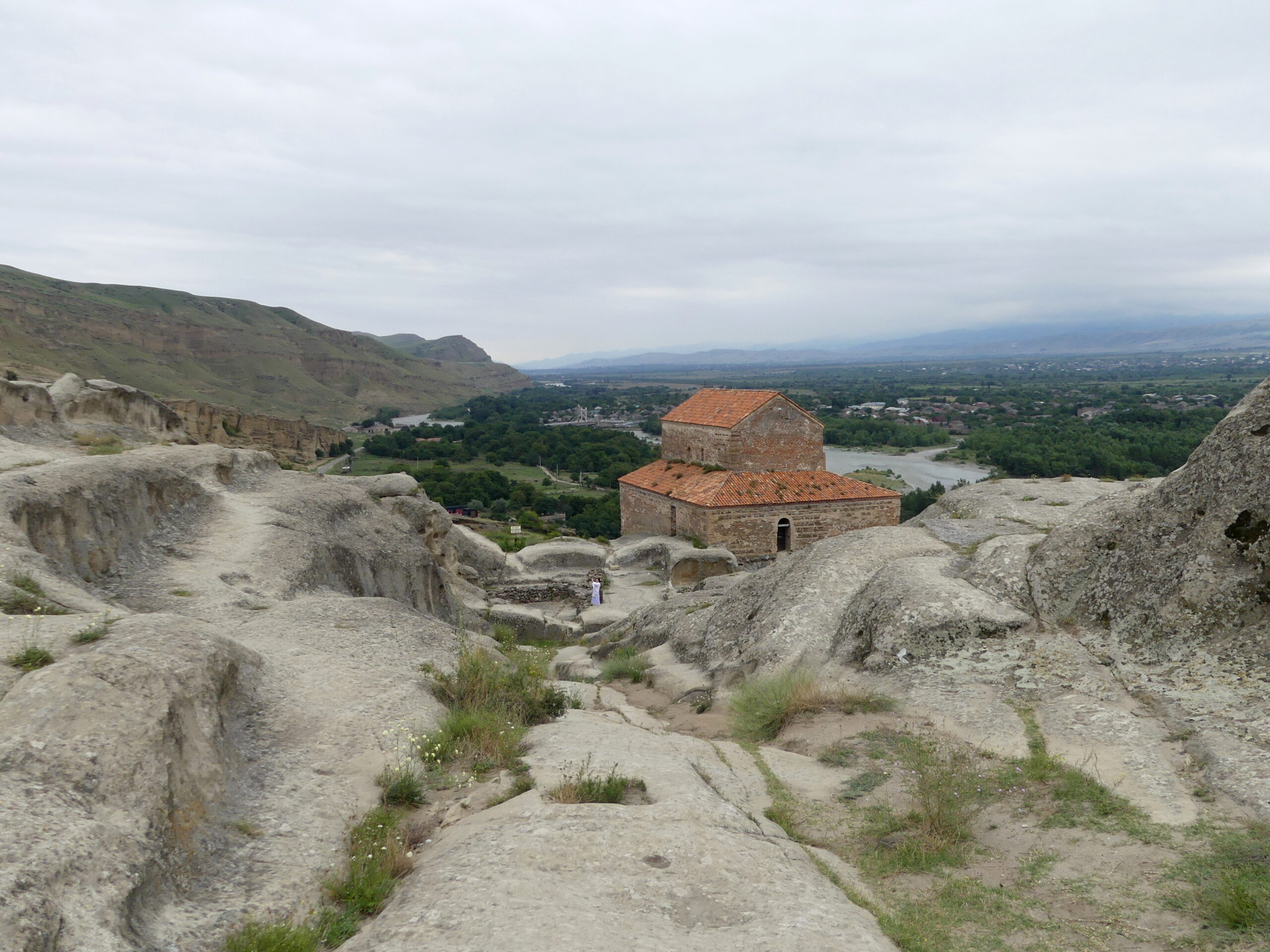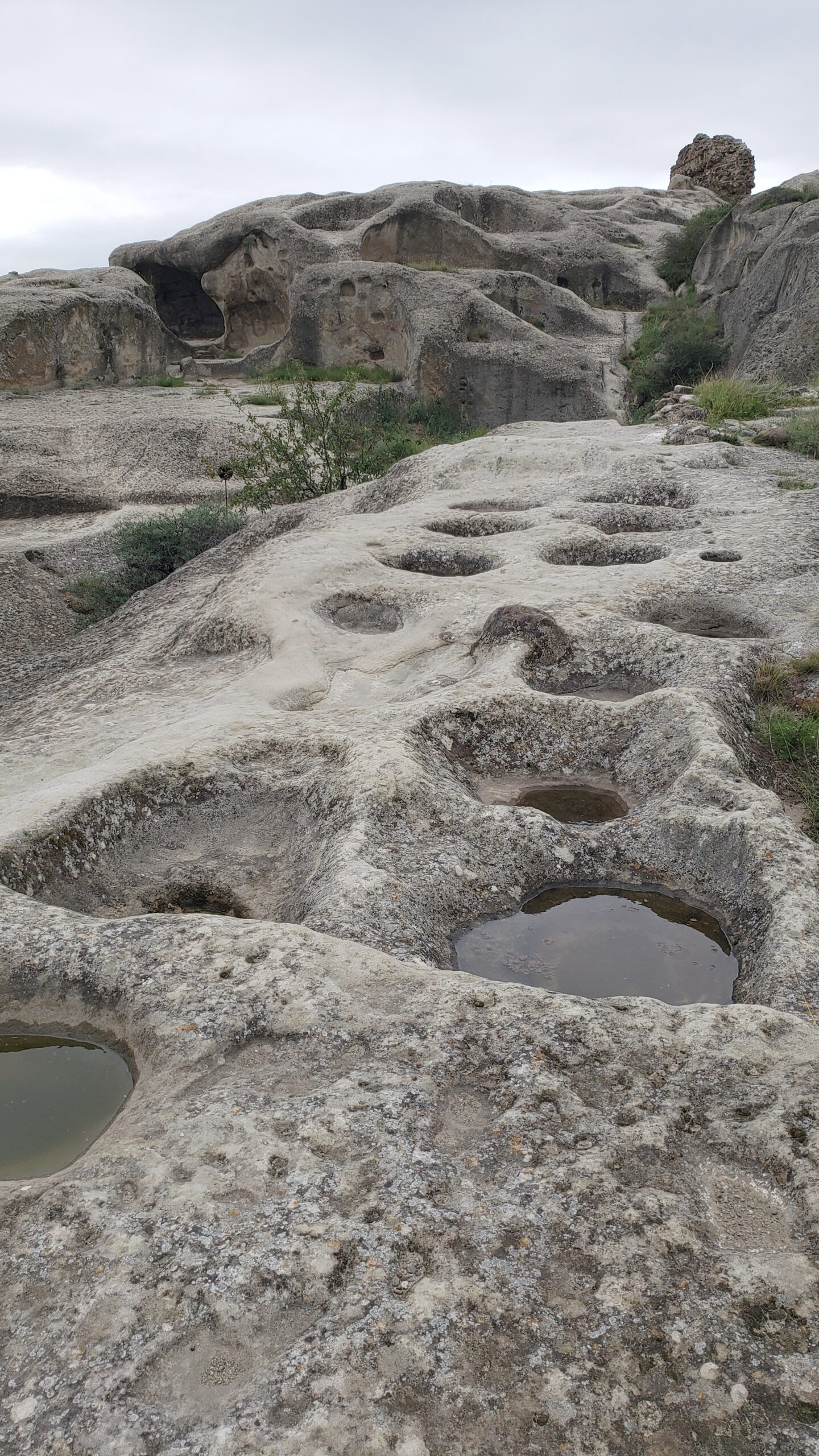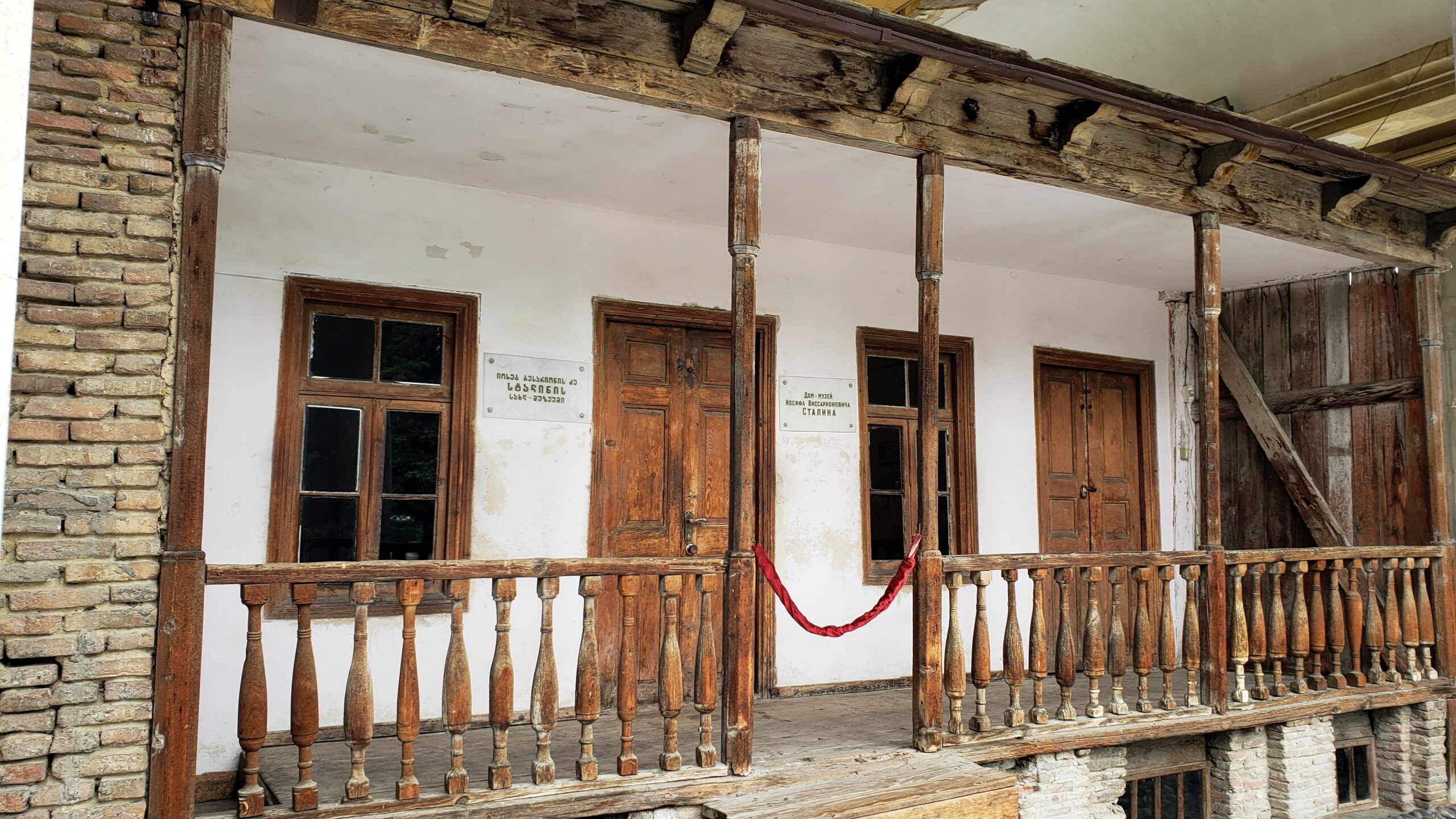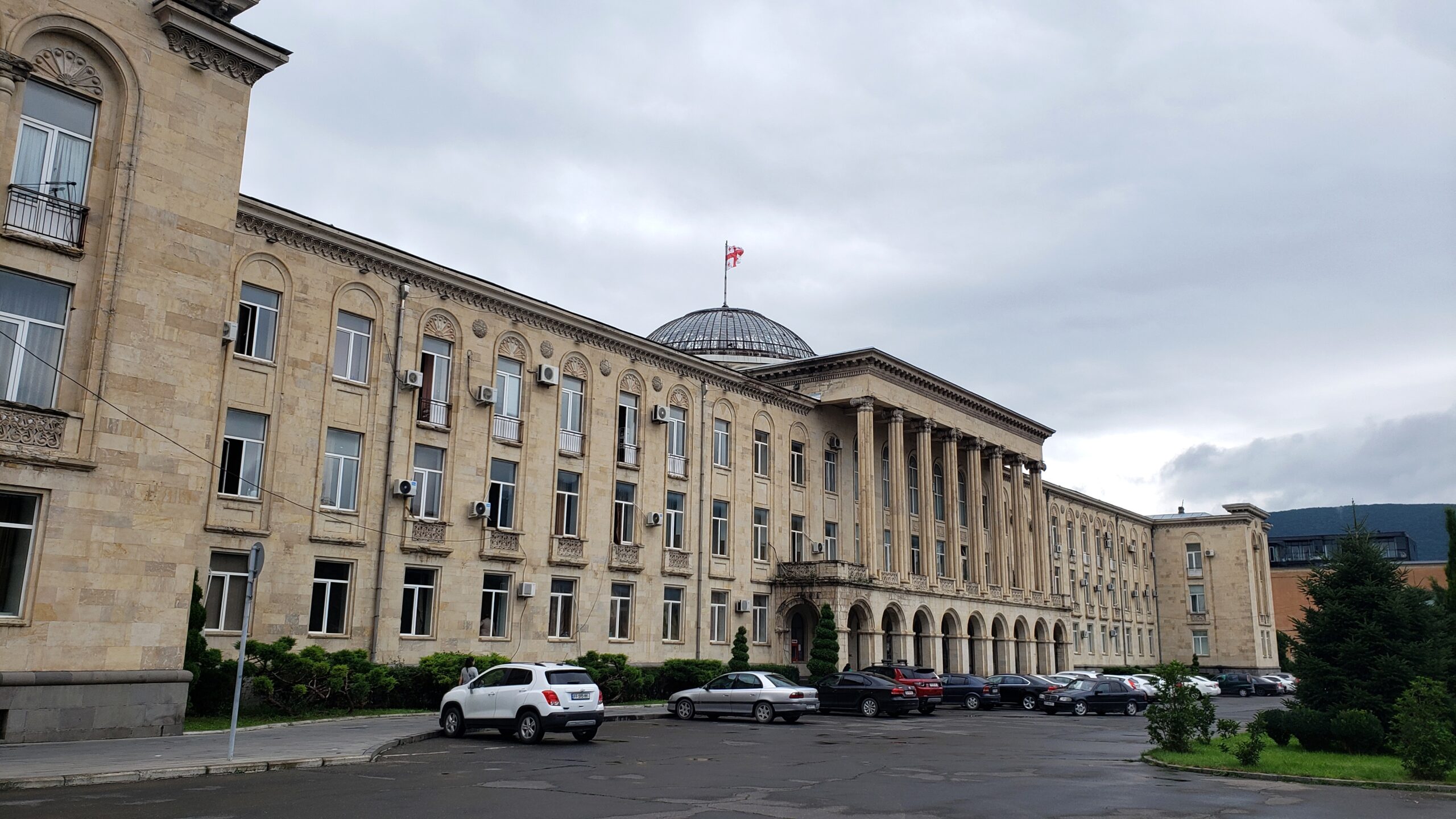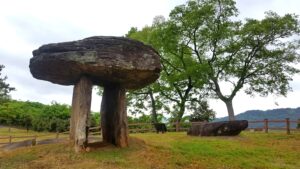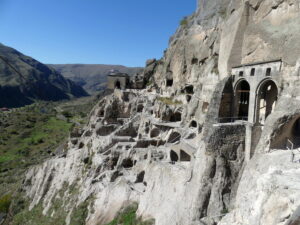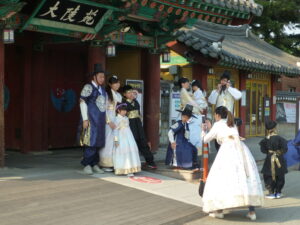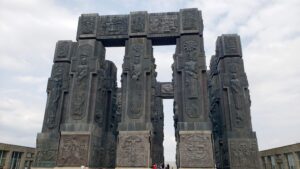Golden Colchis to the West
The Colchians occupied western Georgia, from the Black Sea to the central plains. By several millennia BC, they thrived through craftsmanship in gold and other metals like bronze at the crossroads between Europe and Asia.
That’s why this area was reputedly the destination of Jason and the sailors of the Argo when he sought the Golden Fleece in the 2nd millennium BC. Jason captured the fleece with the help of princess Medea, whose name is still popular today for daughters in Georgia.
Vani, just south of modern Kutaisi, was one of their major cities and their preeminence is celebrated by this ebullient fountain in in the central plaza of Kutaisi. The figures are life-sized recreations of miniature gold figures found in the graves around the old imperial city of Vani.
In Vani itself, there is not much left to see of the city, with scattered ruins about. The museum is a treasure, however, displaying extensive findings from Colchian temples and graves here, dating back 8000 years. We already featured many golden treasures found here in our post about the Tbilisi National Museum (click here to read the article).
One significant remnant is the foundation of the 12-Stepped altar, with its actual steps.
Beneath it, archeologists unearthed an impressive collection of bronze pieces hidden for millennia, including these two favorites of ours.
With its dramatic upward sweep and onrushing momentum from the skies, this balletic statue of Nike, goddess of Victory grabbed our attention. It’s a bronze from the 2nd century BC.
Another stunning 2nd century BC bronze, rescued from deep beneath the 12-Stepped Altar of Vani, was this lamp. Originally hung with the figures facing downward, it depicts Zeus as an eagle snatching Ganymede, considered the most handsome of men, to be with him. The violence of the seizure by the talons contrasts dramatically with the adoring looks of the two figures – and the loving caress from Ganymede.
A different celebration of Colchis history and mythic past appears on the elaborate outer wall of the Green Market in Kutaisi. Designed in Soviet times but finally installed in the mid-1990s, the frieze is packed with historical and mythic figures, as well as notables from Kutaisi’s past. That ram in the upper right appears to be the golden fleece itself. The woman in the center is Mother Georgia, symbol of the country. Below her is a cache of ancient Colchian and modern weapons…a call for peace, perhaps.
A colorful display brightens the interior of Kutaisi’s Green Market, the largest produce and goods market in central Georgia. The market is contemporary, but reminds us of the richness of trade that has always passed through this region.
This area is also known for its rich natural beauty above and below ground. A lot of central Georgia sits within a karst region, systems of canyons and limestone caves that are quite extensive. Several of the showiest caves are touted for visits, but can be more of a herd light-show than a nature-loving one. But we do love caves, so we opted for a small one called Tetra, or “white” in Georgian, named for its glistening white features due to the minerals dripping through them. You can see those whites in this picture, but a lot of color too.
This cave offered speleotherapy, supposedly healthful inhalation of highly ionized air. One other highlight of our essentially private tour was learning about the Paleolithic people who once lived in the cave. And, because wine had been stored in this natural cooling cave, we were schooled on the special characteristics of wine production in Georgia. Vintners use skins as well as the grape, then ferment in clay pots.
Rocky Kartli to the East
The term “cavemen” typically evokes ideas of primitive peoples, but that poorly describes the residents of the stunning cave city of Uplistsikhe. Mainly from 1000 BC to about 300 AD, but even into the Middle Ages, the Kartli people of eastern Georgia maintained a thriving commercial and spiritual center largely built out of rock. Though we can now clamber over just a portion of the city at its peak, with dozens of buildings hewn from the rock, the sophistication of those cavemen is obvious.
The 65 meter (200 foot) climb through the main gate area of Uplistsikhe illustrates how defensible was the city.
Access to water was critical for a rock-top community so this secret passageway – now made a lot more accessible for modern visitors – connected the heights to the river.
View of the river valley from the boulder tops. The stone foundations are the remains of the extended part of Uplistsikhe, finally destroyed and abandoned after the Mongols rampaged through here in the 14th century.
The town center of Uplistsikhe, carved in rock beneath the medieval church, still bustles with visitors.
To us, the most engaging of the many cave structures was this medieval era cavern called the “Single Column Hall.” It does have just one freestanding column, but many other virtual columns carved from the rock walls. Its quiet interior and simple beauty grabbed our attention.
Tamar’s Hall was the site for royal ceremonies. It’s somewhat theatrical in design as well, with a throne section in the middle and a ceiling carved from rock to look like wooden timbers.
This theatrical setting, with wings and backstage caverns, was most likely a site for religious services featuring ‘mystery’ plays, recreations of biblical stories.
The barrel vault over the theatre stage features the most elaborate of the surviving decoration in the city.
View from the high point of the visit along the massive rock mountain to the medieval Orthodox church and the river valley below.
A curious part of the rock city is the section near the peak where winemakers produced and stored wine in these carved holes. Other holes bored throughout the city – and still quite visible – were used as round ovens to make flatbread or store water.
Birthplace of the Iron Curtain
We knew that Georgia was subsumed behind the Iron Curtain of the USSR after World War 1, crushing a brief declaration of independence in 1921. Even before that, Russia annexed the land here bit by bit in the 19th century as Georgians sought Tsarist protection from the Muslim Ottomans and Persians.
What we didn’t recall was that Josef Stalin, the brutal leader of the Soviet Union until 1954, was Georgian by birth and joined the rebellions against the Tsar in the early 1900s.
In his hometown of Gori near Tbilisi, the grand neoclassical edifice of the Stalin Museum still welcomes visitors within a delightful park. Preserved for display outside the museum is this home, where Stalin grew up in the late 19th century.
The other monument to Stalin in Gori is the surprising monumentality of the town’s buildings. Stalin loved grandiosity, especially imitations of neoclassical buildings. So those are the kind of structures that sprawl over the central town of just 40,000 people – such as the massive town hall here, still adorned with Soviet hammers and sickles.
(To enlarge any picture above, click on it. Also, for more pictures from Georgia, CLICK HERE to view the slideshow at the end of the itinerary page.)


